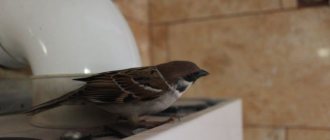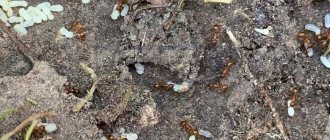Next you will learn:
- What effective and time-tested methods exist today that allow you to catch a mole in the garden, doing it quickly enough and without significant financial costs;
- The principle of operation of a pipe mole trap and what design options for this trap really give the desired result;
- How can you easily catch a mole in a bucket or in an ordinary glass jar;
- What is important to know about the correct installation of traps on the site so that their effectiveness is as high as possible;
- What to do with a mole after it is caught;
- What traps and lethal and crippling traps are most popular and is there really any point in using them (including fishhooks);
- How can you reliably protect your garden from repeated penetration of moles.
In general, catching moles can be considered a much more effective way to combat these pests in the garden than using all kinds of repellents, including sonic and ultrasonic repellers of various designs.
First of all, if you catch a mole, then a situation typical of the use of repellers will definitely not arise, when the mole simply moves to the other end of the garden and digs there (or temporarily goes to a neighboring area). In addition, by correctly using mole traps, it is sometimes possible to literally reduce the size of the mole population to almost zero, not only in one’s own area, but also in general in the immediate surrounding areas.
On a note
An important point is that catching moles is a humane way to combat these pests - compared, for example, with methods such as using poisons, pumping car exhaust gases into underground passages or flooding them with water. When a civilized person catches an animal in a live trap, he saves its life and does not maim it, but simply releases it into the wild far from his garden.
Of course, this is relevant for situations where the gardener initially intends to catch the mole and not kill it. However, today there are also flayer fishing methods, during which moles are maimed and then suffer for a long time before inevitable death. We will mention some of these barbaric methods of catching moles in a garden plot a little lower.
Now let's see what devices you can use to quickly catch all the moles in your area and how to effectively apply the appropriate designs in practice.
All the ways to catch a mole
Generally speaking, today the following popular methods of catching moles in the garden and dacha are most widely used:
- The so-called mole trap is a pipe into which the mole crawls, but can already get out;
- A pit trap into which the animal simply falls, moving along its underground passage, and then cannot get out of it;
- Traps that kill animals immediately or slowly (this also includes a wire mole trap);
- Tackle made of fishing line and fishing hooks: the mole clings to the hook either with its skin (skin), running into itself while moving through the tunnel, or with its mouth, collecting earthworms strung on fishing hooks (and this is just one example of the flayer approach to catching moles);
- Perhaps it is also worth mentioning an ordinary shovel - with the proper dexterity and experience, with its help it is possible to dig an animal out of the ground alive, and then, for example, place it in a bucket.
It is noteworthy that the effectiveness and ease of use of all these options is approximately the same (with the exception of fishing with a shovel - this method is the least effective and requires a lot of time). Any trap is simply installed in the garden, catches the mole in one way or another, and the gardener can only check from time to time for the presence of a “catch”.
Accordingly, the question arises: if a live trap catches a mole as simply and quickly as a mechanism that pierces the animal with a knitting needle or breaks its back, then why use lethal traps at all? Unfortunately, in many cases, the answer lies in the gardener’s banal laziness - he’s just too lazy to carry the caught moles a kilometer away from the plot every time, because it’s much easier when the trap “delives” a ready-made corpse, which is easy to dispose of, for example, by burying it in the far corner of the garden.
On a note
Some gardeners justify their actions to destroy moles in the following interesting way: they say, in wildlife it is customary to protect your plot from the encroachments of strangers. Well, they say, I also protect the results of my work (beds, crops) from pest attacks, I protect my territory.
Well, that's right - that's how it is in the animal world. The question is why compare yourself to an animal...
Repellers made from plastic bottles: do they help?
There are two ways to scare off moles with plastic bottles:
- Make pinwheels out of bottles that spin in the wind, make noise and scare the animals (moles hear well);
- Or you can simply lay out large quantities of closed plastic bottles throughout the area. With constant changes in temperature in the morning, afternoon, evening and night, they make cracking noises, which presumably also scare away animals.
Many gardeners and gardeners note that such homemade repellers are really effective and help get rid of moles on the site. However, at the same time, many reviews indicate the lack of effect from the use of these funds.
Apparently, the truth is somewhere in the middle: moles can actually be frightened by the noise created by these devices and leave the area in search of more comfortable territory. But repellers can also be ignored, especially if there is a problem of survival due to lack of food. Therefore, the use of such repellers is a kind of lottery: it may help, or it may not give any visible result.
Tube mole traps, purchased and made by yourself
The classic mole trap in the form of a pipe has a fairly simple design: it is a plastic or metal pipe with a diameter of approximately 9-12 cm (the average diameter of a mole's stroke), with doors on both sides on the top hinges. The doors of the mole trap-pipe open easily inward, but do not open outward.
A mole trap made according to this principle is called a Solomon's trap.
In order to catch a mole, a pipe trap must be installed in the excavated passage of the animal. The mole, moving along the tunnel, comes across a door, pushes it forward and crawls inside the trap. The door falls down under its own weight, and the animal can no longer open it from the inside.
If the second mole follows the first one, it will also crawl into the trap and remain in it, and the animals can climb into the live trap from different sides.
On a note
There are cases when, when checking, up to 3 moles were found in one live trap at once. Sometimes shrews are caught in the pipe trap together with the mole. During the day, some gardeners managed to catch 6 moles with such a trap.
You can easily make a pipe mole trap with your own hands from scrap materials. In a piece of pipe you only need to make light hinges for the doors, and also provide a stopper for opening the door outward. The easiest way is to make the door itself higher than the pipe passage (in fact, oval-shaped), and hang it on a hinge inclined inward.
Variants of such traps available for sale cost approximately 200-400 rubles.
In the West, special plastic mole traps are made, from which you can get animals without digging the trap itself. The photo below shows an example of such a device:
It is also useful to read: Ecosniper mole repellers and reviews of their use
Another version of a trap that works on the same principle is a design of several plastic bottles inserted with their necks one into the other. The necks of the bottles are cut with scissors in several places to create easily retractable petals. The mole, crawling into such a “neck,” presses the petals inward with the weight of its body, penetrates into the central section of the trap, and then cannot move the plastic petals apart to crawl back out.
This mole trap made from plastic bottles is exclusively a product of folk art. It’s easy to make with your own hands, having on hand three bottles of the same size, scissors and tape.
Mole trap, or how to catch a mole in a bucket
This trap is also made from scrap materials. The main task here is to make a hole in the middle of the mole’s passage, into which the animal will fall and will no longer be able to get out of it.
Usually, to catch a mole in this way, they use a deep pan, a bucket (plastic or metal), a glass jar or a cut plastic bottle of large diameter.
The mole trap-pit is formed under the passage of the animal in such a way that its upper edge is at the same level with the lower edge of the underground passage. From above, the entire “excavation site” is covered with a sheet of plywood or other opaque material (so that the mole is not scared off by sunlight). As a result, the animal, simply moving along the way, falls into the installed container.
The photographs below show how a regular three-liter jar is installed for this:
Such live traps are as simple as possible to manufacture and do not require financial investment. Often, a couple of such traps allow you to catch not only all the moles in your garden, but also shrews, voles and other living creatures.
On a note
If a mole and a shrew fall into a pit trap at the same time, then, as practice shows, with a high probability the shrew will soon become a source of food for the mole.
Repellent devices
Since it is not always possible to catch a mole, you can use various devices that will help drive it out of the territory. There are many repellent devices. They help fight shrews and moles. The simplest repellent device is a pinwheel made from a plastic bottle. In order to make this device, you will need a piece of water pipe. You also need to prepare a plastic bottle. Pieces of pipes must be driven into the ground. In this case, you need to make sure that the lower end is below the mole's passages. A pin is inserted into the top of the pipe. Its optimal diameter is 8-10 mm. The pin is fixed in the center of the pipe. To do this, use a wooden plug. A hole is burned at the bottom of the bottle. This is done using a metal pin. It is necessary to make slits on the bottle. They should be located along a continuous line. The plastic bends along the contour. There should be exactly four folds. The bottle will rotate with any blow of wind. In this case, resonance of the hollow pipe is noted, which creates noise. It has been established that moles are very afraid of him. For an area of up to 30 acres, about 10 such devices are enough.
How to set traps correctly?
In order to quickly catch a mole in a summer cottage or garden using a trap, when installing it you need to follow a few simple rules, ignoring which can significantly reduce the chances of success.
These are the rules:
- The mole trap needs to be installed in horizontal near-surface passages between molehills (preferably fresh ones). It is almost never possible to catch a mole if you set the trap in the very heap of discarded earth;
- When excavating a passage, you should create as little destruction as possible. It is advisable to work with a garden trowel rather than a shovel;
- Having made a hole, you should try to restore the adjacent areas of the mole's path as much as possible. It is advisable to line the edges of the trap itself with earth, lightly pressing it flush with the walls of the container;
- The place where the trap is installed must be covered on top with a material that is completely opaque to light, and additionally sprinkled with earth around the edges (practice shows that even the slightest gap that allows sunlight to penetrate inside the pit greatly reduces the effectiveness of the trap - although moles have poor eyesight, however, they are able to distinguish light from darkness well);
- If you want to increase the efficiency of the mole trap-pipe or pit, then it is recommended to put several earthworms cut into pieces inside the trap - the smell attracts moles (these animals feed mainly on earthworms).
An important point is that after installation the trap must be checked every 5-6 hours. The fact is that moles, due to their very fast metabolism, die of starvation in the absence of a food source for about 18-24 hours. So a day without food for a caught mole is certain death, and any “live trap” without proper supervision can easily become a torture chamber, guaranteeing the animal a slow, painful death.
Considering that after being removed from the trap and taken out of the area, some more time will pass until the mole can catch its first prey, it is advisable to keep it caught in the mole trap itself for no more than 6 hours.
On a note
Some commercially available mole traps-tubes have special holes through which you can see whether a mole is caught in the trap or not, without digging out the entire structure from the ground each time. Therefore, when making a homemade trap from a pipe, it is advisable to provide similar inspection holes in advance (see example in the photo below).
What to do with a mole after being caught?
Immediately after catching the mole, you need to remove it from the trap - before doing this, it is advisable to wear thick construction gloves, since the animal has sharp teeth and can bite painfully.
A caught mole can be placed in any high container (for example, a bucket) and taken out of the area at a distance of at least 1 km from your dacha. It is this distance that guarantees that this individual will never return to your site (in the worst case, after several seasons, the descendants of this mole may wander into your area).
It is preferable to release the animal either in a field with loose soil, where it can quickly burrow into the ground, or in a bush, where it is least noticeable to predators (mainly birds of prey). At this point, the task of catching the mole can be considered solved: the garden is rid of the pest, the animal itself is not destroyed, not maimed, and released into the wild, where it has a high chance of survival.
On a note
There is no need to worry that you will have to remove moles from the garden 20-30 times. As a rule, 1-2 moles live in one medium-sized garden plot (only in rare cases more - when the offspring of one female grows up in mid-summer). Accordingly, if you manage to catch at least 10 individuals, this will already be a very significant result, which will most likely save not only you, but also all your neighbors in the area from serious problems with moles.
After catching all the moles, pit traps must be dug out of the ground so that various beneficial insects (as well as shrews, which bring a lot of benefits to the garden, although many fight with these animals out of ignorance) do not get caught in them and die.
Common Mistakes
There is an opinion that a family of moles can be driven away from the site using products with a pungent odor placed in different places on the land. This is a mistake; small diggers sprinkle soil on the side where the bad smell comes from.
Another common mistake is using noise scares. Completely useless things. Moles happily settle near highways and railways.
Catching moles with a shovel
This method of catching moles is as simple in principle as it is complex in implementation: a gardener with a bayonet shovel waits near the mole’s passages when the animal passes through one of the galleries close to the surface of the earth. At this moment, the ground above him rises slightly, and the movement of the animal is clearly visible. The catcher’s task is to stick the bayonet of the shovel behind the mole and quickly throw the soil with the animal itself to the surface of the earth.
It is also useful to read: Using a mole net and reviews about this method of protecting a site
The main difficulties of this method:
- Usually you have to spend a lot of time before you can notice the movement of the mole along its course. As a rule, moles inspect tunnels once every few hours, but they may not visit individual branches for days at a time. So there is no guarantee that a person on duty in a certain part of the garden will wait for the animal to appear;
- In addition, the mole needs to be dug up very quickly - the animal moves underground quite quickly, and can avoid the fate of being caught if the gardener is slow.
Nevertheless, the experience of a considerable number of gardeners shows that this method is generally quite effective and widespread: many people catch moles with a shovel.
Best time to hunt
You can start hunting moles as early as June 20, when the young animals have grown a little and begin to go hunting. The season ends in late autumn, when the first night frosts strike and the animal goes into hibernation. You can resume hunting immediately after snow falls, but most moles appear in the summer.
During the entire hunting season, you will need to place a large number of traps over a fairly large area, which must be divided into small areas. After the moles stop falling into traps, you can safely move to another place.
Lethal means
Products that kill moles upon capture are available in various variations, and they implement different principles of action.
Let us note the most popular of them:
- A plunger trap is installed above the mole's passage, and a guard is lowered into the passage itself. As the animal passes along the way, the guard descends and the brackets on a powerful spring crush the mole’s body. After this, the animal suffers from several seconds to several hours, after which it dies;
- A harpoon trap (it is also sometimes referred to as a plunger trap due to its design features) is installed above the passage, and when lowered, the guard pushes out several harpoon spokes. These harpoons pierce the animal, which, as in the previous case, often does not die immediately, but only after some time;
- Crushes - most often these are ordinary mousetraps and rat traps, buried in passages, less often - special (and quite expensive) imported devices;
- Wire mole traps - kill the mole by squeezing its body (they can also be called nooses or a type of disease trap);
- Loops that, when triggered, forcefully tighten on the animal’s body and lead to suffocation;
- And, finally, the so-called crossbows (firearms), usually of quite complex designs - they shoot the animal in the face. They are not commercially available and are made by hand; they require the use of gunpowder, shot and a motion sensor. They are dangerous for people and therefore their use is prohibited.
Any of these means allows you to catch a mole and kill it immediately, on the spot, without the direct participation of the owner of the site. As a rule, such devices are actively used by comrades who are not burdened by ideas about the need for humane treatment of animals.
Here is a clear example of using wire traps:
Extreme measures
Pets will also help in catching moles.
Dogs and cats, running around the site, often tear up mole holes under the influence of the hunting instinct. To cats, the animals resemble mice, so they become desirable prey. However, in this case, if the animals do not die, they are seriously injured. It is important to understand that moles are just animals, they do not intentionally cause harm, so try to use humane methods if possible
Other inhumane, but fairly reliable methods include traps and molebreakers of various models, which are sold in large numbers in stores. They are equipped with a spring and are aimed at directly killing the animal that falls into the trap.
In general, the question of how to catch a mole that has appeared on a site is solved quite simply. Sometimes the fight against animals takes a lot of time, but thanks to humane methods it is possible to protect the crop without harming the animals.
This is interesting: which mole repeller is better?
Is it worth catching moles with fish hooks?
There is another cruel way to catch a mole - catching it with a fishing hook. The principle is simple: a small hole is made in the arch of the passage, into which a fishing line with several fishing hooks is lowered (usually tees are used to be sure), the end of this fishing line is tied next to a metal pin driven into the ground or simply to a strong stick lying on the ground.
The mole, going along its course, runs into a fishing hook and it digs into the body, piercing the skin. The animal cannot free itself and tugs on the fishing line, which is visible on the surface (sometimes a bell is tied to the pin, which at that moment begins to ring). After this, the gardener can only dig out the passage with a garden shovel and pull the struggling mole to the surface directly by the fishing line.
During such manipulations, the mole's side or abdomen is sometimes literally torn apart with a hook. And it is quite obvious that the knackers who use such a means of capture will definitely not stand on ceremony with the animal after it is caught.
There is an even more sophisticated way of mocking a mole - using the same fishing hooks with earthworms pre-attached to them. The animal will try to eat such bait, and the hook will stick into its mouth or throat.
On a note
Perhaps somewhere here lies the line when cruelty to animals begins to border on sadism: if a simple gardener at the dacha is able to catch moles in such ways, then why are we surprised when somewhere in a foreign country a live seal’s nose is sawed off with a grinder or They skin foxes alive on fur farms.
Let us only add here that in terms of efficiency and labor intensity, catching a mole with a hook is comparable to using live traps. But if adequate gardeners try to save the life of the animal and not injure it, then sadists, of course, will be more interested in figuring out how to catch a mole with fishing hooks.
Poisons
Unfortunately, many summer residents, who have resorted to both imaginable and unimaginable methods in the fight against moles, note that the most effective way of getting rid of them is the use of poisons. It is necessary to use poisons with extreme caution and is not recommended if the area is inhabited by domestic animals.
- There are special poisons developed to combat moles. They process earthworms, which are then placed in molehills and buried;
- The most cruel is the use of special smoke bombs, which produce a large amount of acrid smoke even underground, where a minimal amount of oxygen is supplied. The moles begin to run away from the smoke deeper into the tunnel, where they eventually suffocate from the suffocating gas.
How to protect the area from repeated penetration of moles
It should be understood that catching a mole and removing it from the site does not mean protecting your garden from these animals forever. If one mole somehow got into the territory, then in the future other individuals will be able to get here, it’s only a matter of time.
Therefore, even if you managed to catch, it would seem, all the moles in the garden, immediately after that it is useful to take measures to protect the area from them:
- Dig a plastic or metal mesh into the ground around the perimeter (to a depth of 70-80 cm and protruding 15-20 cm above the ground surface). Sometimes slate or roofing felt is dug in instead of mesh;
- A narrow, not very deep trench along the perimeter of the site also helps protect against moles - it is covered with crushed stone or broken bricks;
- A more expensive option is to pour a concrete foundation around the perimeter of the site and then install a fence;
- Laying a lawn mesh over the area also helps - to do this, remove the top layer of the lawn (5-10 cm), lay the mesh, and then put the top layer back.
Such measures will guarantee that moles will no longer appear on the site.
If you have personal experience of catching moles in one way or another, be sure to share it by leaving a review at the bottom of this page. Perhaps this will help someone who is in the same situation.
Interesting video with an example of using a mole trap-pipe
Planting repellent plants
This method of pest control is not as effective when compared with the use of various traps and baits. In addition, achieving results requires patience. However, the advantages include the opportunity to further improve the garden plot.
Among the “live” mole repellents are:
- Flower crops. These include marigolds, sage, calendula, chrysanthemum, irises, petunia, nasturtium, imperial hazel grouse, and Siberian scilla. It is recommended to plant them near the beds. It is also permissible to use infusions based on these plants.
- Garden crops such as potatoes, tomatoes, onions (including decorative ones), garlic, parsley, caraway seeds, dill. The effectiveness of planting crops is due to the high content of phytoncides in them, which have a repellent effect on moles.
- Insecticides of wild origin, some of which are harmful to humans. Among the safe ones are bird cherry, tobacco, spurge, burdock, mustard, and wormwood.











